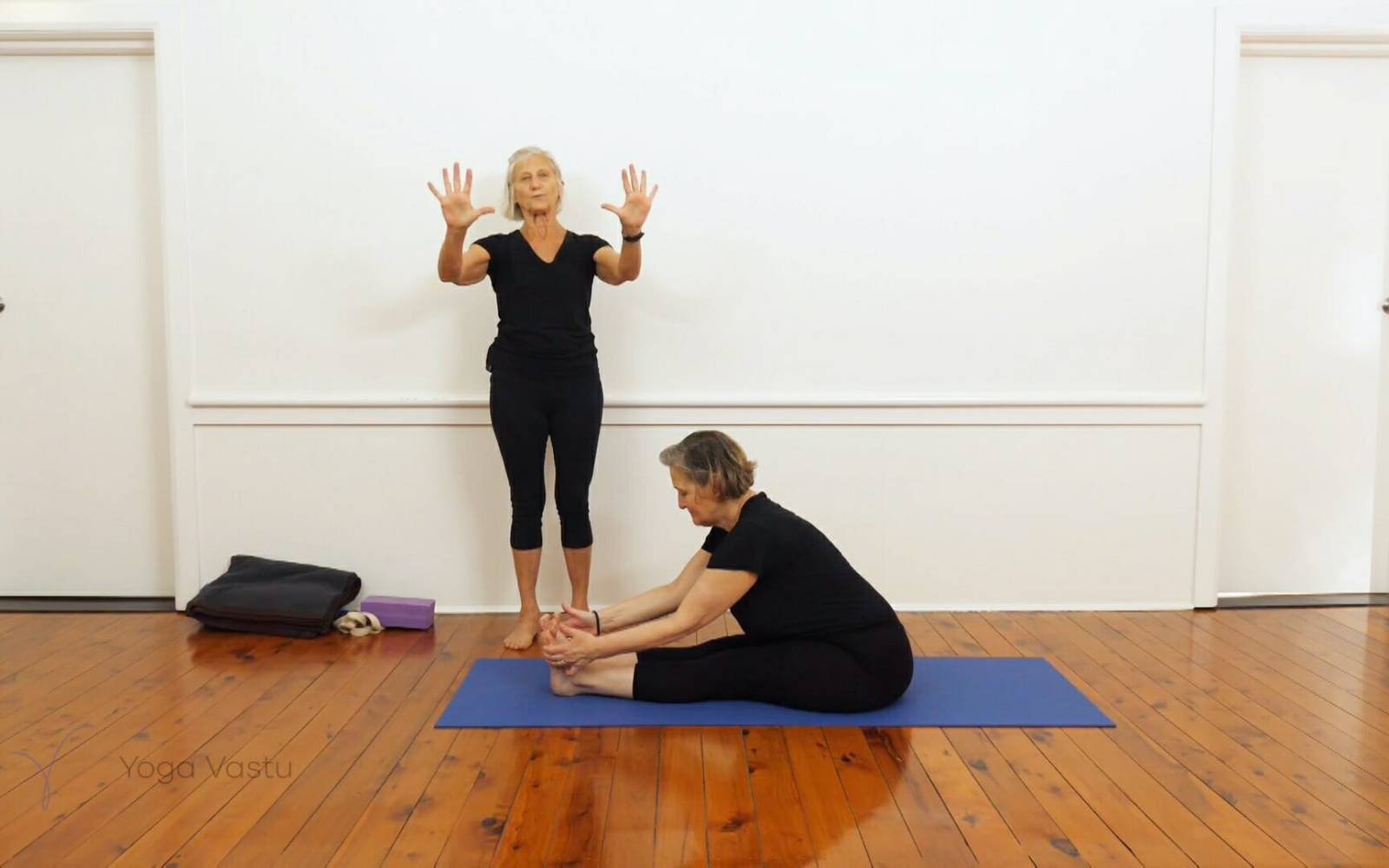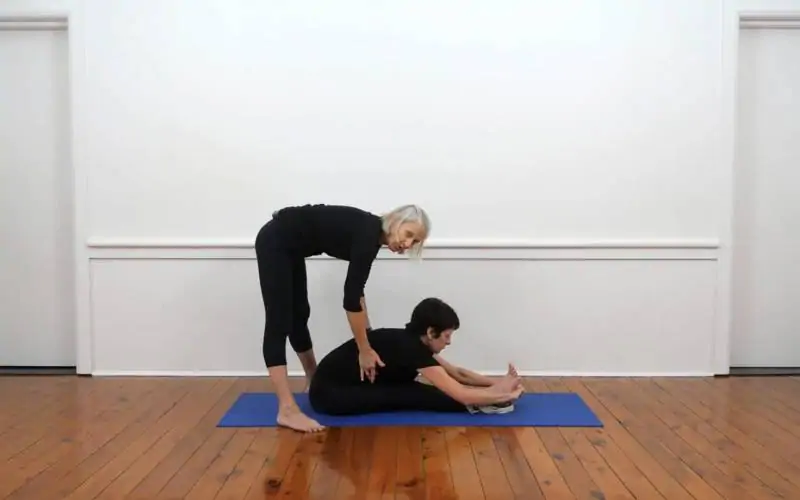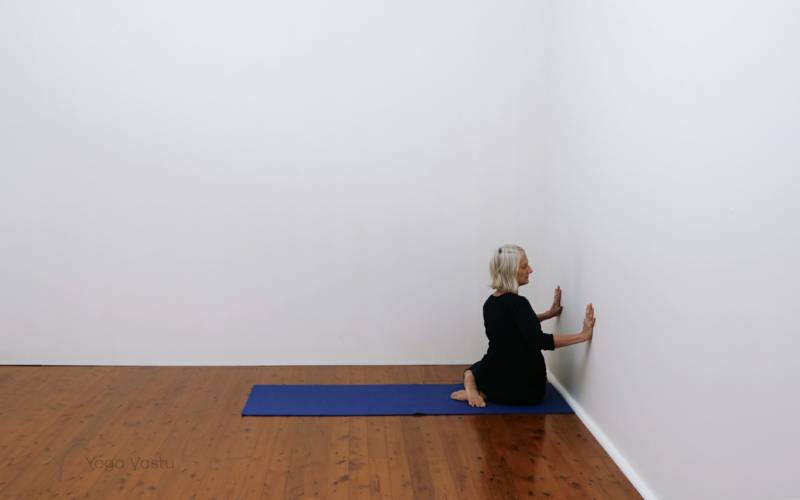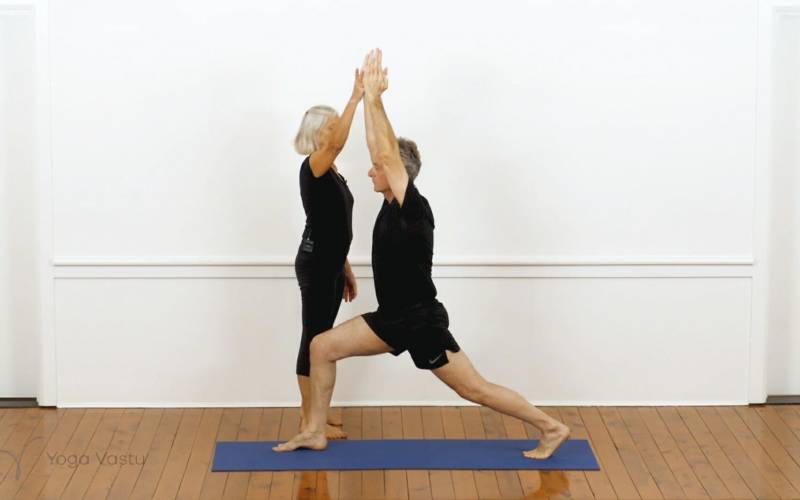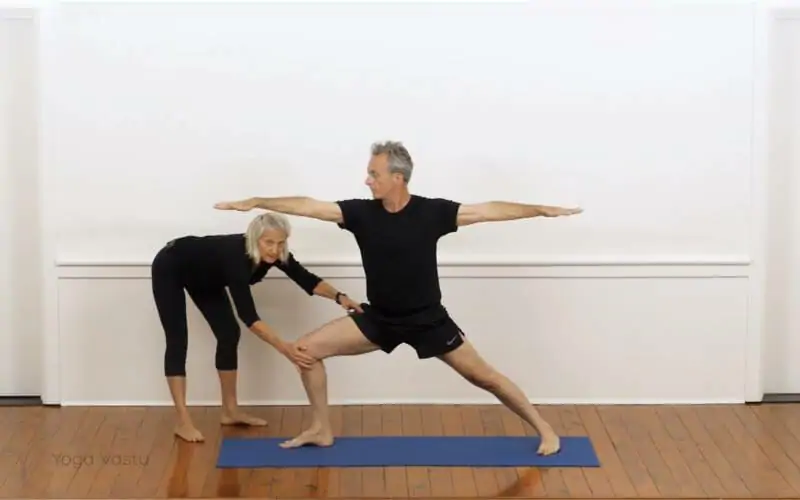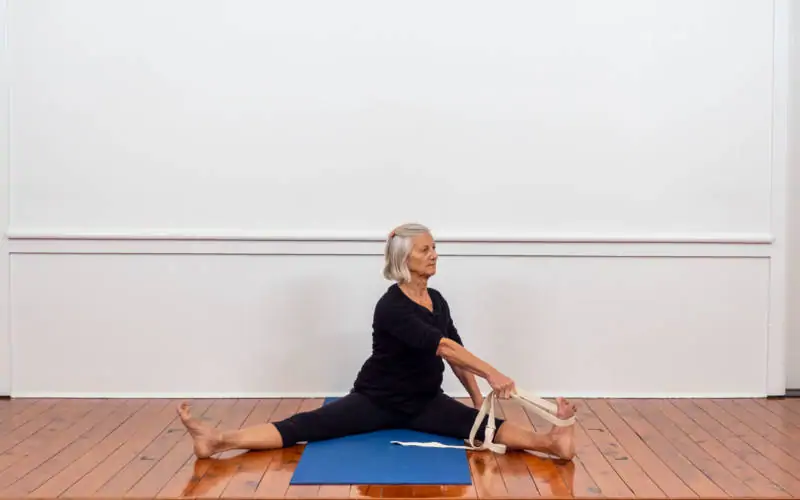How to perform Seated Forward Bend with Concave Spine Looking Up
Start in Dandasana. Bend over your legs as far as you can without rounding your back. As you breathe try to increase your range of motion. Use a belt if necessary.
What is Paschimottanasana?
Seated, forward bend, Paschimottanasana, culminating in the complete release of the head to the knees, is typically the final pose in the sequence. Compared to many of the other forward bends, it appears a more simple pose, but is actually, an intense forward bend, requiring full extension of the hamstrings, good length of the front body, and strong inward movement of the dorsal spine.
When to use Paschimottanasana?
Paschimottanasana has a quieting effect on the senses and the heart. The releasing of the head, either with support or to the knees, stills the eyes and slows the breath. Forward bends, due to this effect are good when recovering from an illness, the broadening of the lower back can also help to soothe the adrenal glands. Working more deeply in the pose extends the hamstrings and lengthens the calves and achilles. Active engagement of the back upper ribs and full length maintained from pubis to sternum is essential in achieving the full forward extension.
